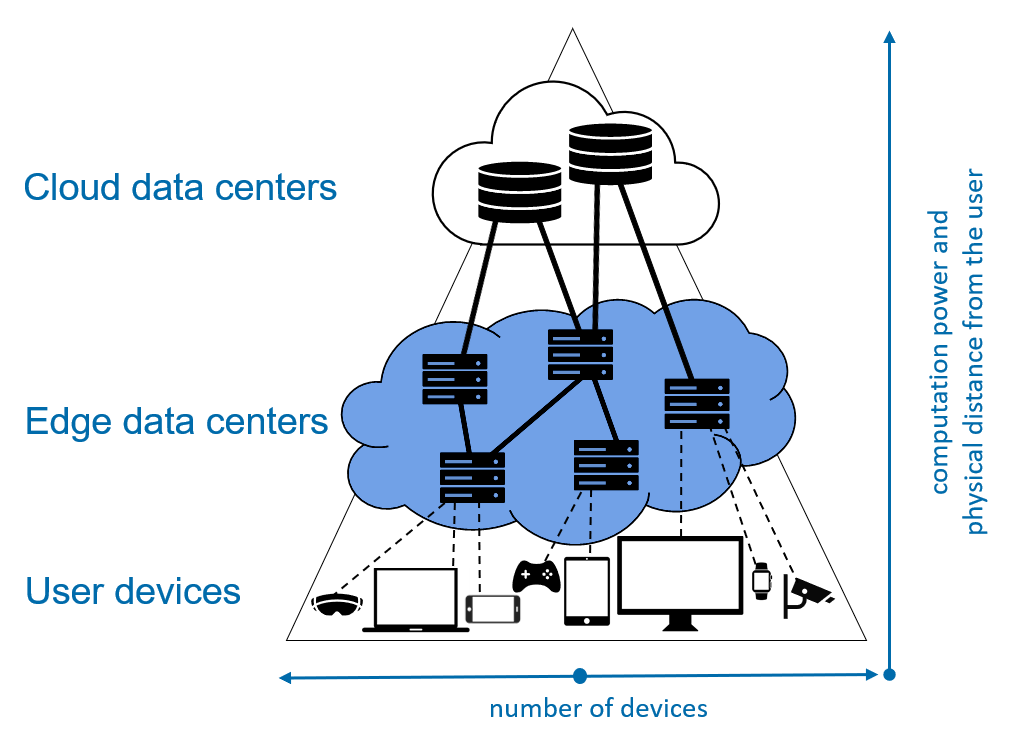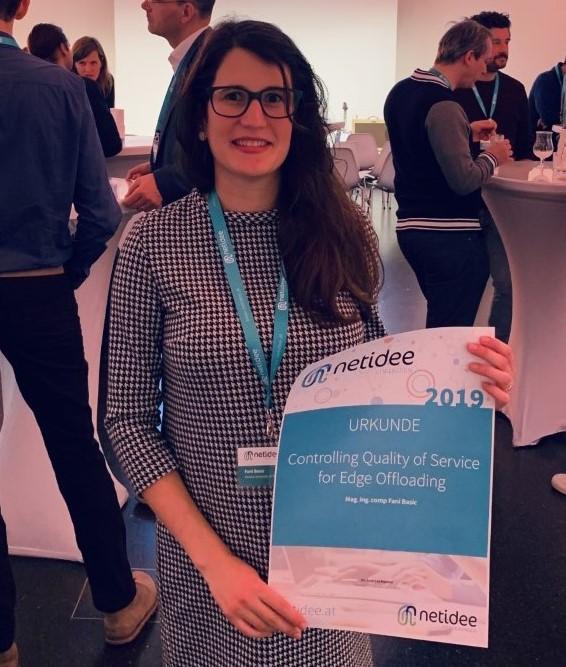
Förderjahr / / ProjektID: / Projekt: Welcome to the Edge
Edge computing extends the Cloud computing paradigm with the goal of improving and uncompromising Quality of Service (QoS) for the growing number of mobile and IoT devices and emerging real-time applications.
A growing quantity of data is produced at the edge of the network
We are embracing the development of the Internet of Things (IoT) and the prevalence of ubiquitously connected smart and mobile devices. By 2020, according to CISCO predictions, 50 billion devices will connect to the Internet and 75% of the global mobile data traffic will be occupied by video streaming services. This leads to the growing quantity of data produced at the edge of the network and, consequently, to a network traffic explosion. Currently, devices mostly rely on the Cloud computing infrastructure to perform their tasks. By allowing resource-constrained mobile devices to offload data- and compute-intensive tasks to the remote Cloud, we can extend their battery lifetime and improve their storage and computation capabilities.
Cloud and Edge comparison
However, centralized Cloud architecture imposes high network latency and computation offloading to the remote Cloud may result in longer response time and higher network cost. This is especially infeasible for emerging applications such as interactive gaming, augmented reality, smart home/city, connected vehicles, as their low-latency requirements for executing complex tasks are increasing rapidly. In addition, with the proliferation of smart and wearable devices, we are facing the mobility of data sources. Cloud computing, as a fully centralized approach with farms of computers usually placed at one or few locations, has unsolved issues regarding mobility support and location awareness. Therefore, Edge computing, deployed in a fully distributed manner, with offloading tasks to the geographically proximate Edge nodes, emerges as a promising solution to this problem.
Edge computing is a promising paradigm that relies on heterogeneous computing resources located at the edge of the network, close to the end-user, conveniently to support time-critical mobile/IoT applications and non-intermittent service in case of client mobility.

Economic impact
Some companies consider Edge computing as the new (distributed) Cloud. Nevertheless, Edge computing market size alone is forecasted to hit $3.24 billion (USD) by 2025 (according to Grand View Research report from June 2019). Having this in mind, and the fact that both IoT processes and Cloud computing in general will benefit from Edge computing resources, a growing tendency towards the three-layer architecture applying Edge computing, shown in Figure 1, is understandable. In our research, we investigate novel strategies for monitoring and controlling QoS in Edge offloading, therefore stay tuned for upcoming blog posts with the latest news in the Edge computing area.


